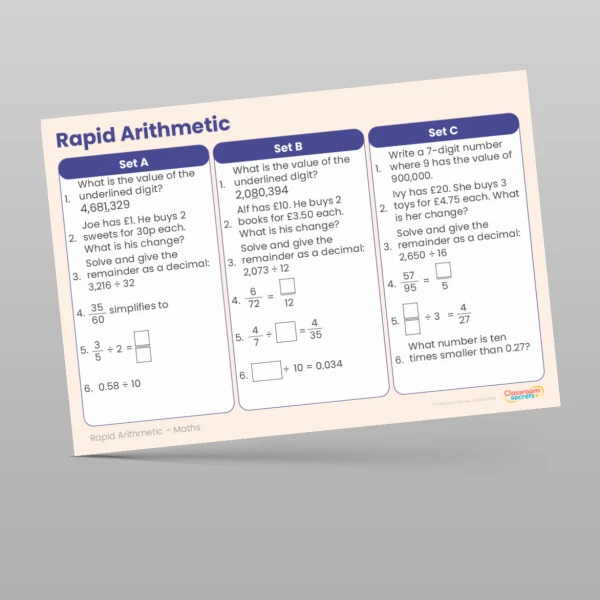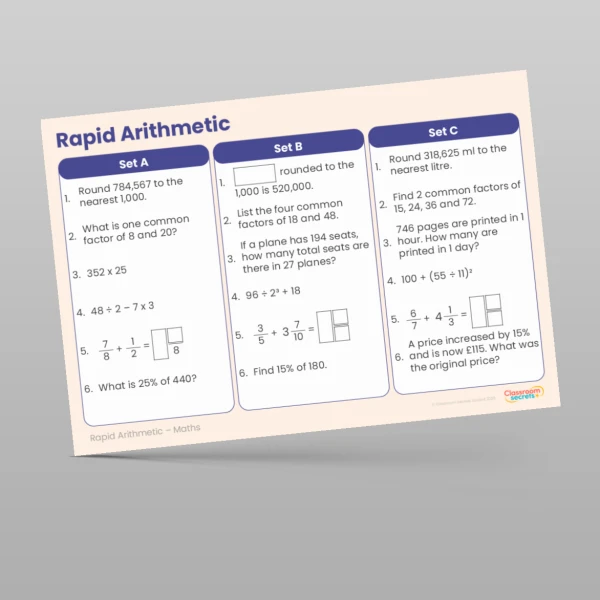

This Year 6 Spring 1 Week 6 Rapid Arithmetic resource recaps key Year 6 objectives already covered if you are following the Classroom Secrets Maths scheme, such as dividing a 4-digit number by a 2-digit and expressing the remainder as a decimal, multiplying fractions and handling negative numbers. Questions become more challenging as children move between Sets A, B and C.
This resource requires minimal set up as we've specially designed it to be displayed on the interactive whiteboard to save on printing costs and photocopying time. It's ideal to use during registration, at the start of a maths lesson or whenever you have some time to spare. Download now!
Curriculum Objectives
- Read, write, order and compare numbers up to 10 000 000
- Determine the value of each digit in numbers up to 10 000 000
- Round any whole number to a required degree of accuracy
- Use negative numbers in context, and calculate intervals across zero
- Use estimation to check answers to calculations and determine, in the context of a problem, an appropriate degree of accuracy
- Solve addition and subtraction multi-step problems in contexts, deciding which operations and methods to use and why
- Identify common factors, common multiples and prime numbers
- Perform mental calculations, including with mixed operations and large numbers
- Multiply multi-digit numbers up to 4 digits by a two-digit whole number using the formal written method of long multiplication
- Divide numbers up to 4 digits by a two-digit whole number using the formal written method of long division, and interpret remainders as whole number remainders, fractions, or by rounding, as appropriate for the context
- Divide numbers up to 4 digits by a two-digit number using the formal written method of short division where appropriate, interpreting remainders according to the context
- Solve problems involving addition, subtraction, multiplication and division
- Use common factors to simplify fractions; use common multiples to express fractions in the same denomination
- Compare and order fractions, including fractions > 1
- Add and subtract fractions with different denominators and mixed numbers, using the concept of equivalent fractions
- Multiply simple pairs of proper fractions, writing the answer in its simplest form [for example, 1/4 × 1/2 = 1/8]
- Divide proper fractions by whole numbers [for example, 1/3 ÷ 2 = 1/6 ]
- Associate a fraction with division and calculate decimal fraction equivalents [for example, 0.375] for a simple fraction [for example, 3/8]
- Identify the value of each digit in numbers given to three decimal places and multiply and divide numbers by 10, 100 and 1,000 giving answers up to three decimal places
- Multiply one-digit numbers with up to two-decimal places by whole numbers
- Solve problems which require answers to be rounded to specified degrees of accuracy
Tags
Spring
6N2
6N3
6N4
6N5
6C3
6C4
6C5
6C6
6C7a
6C7b
6C7c
6C8
6F2
6F3
6F4
6F5a
6F5b
6F6
6F9a
6F9b
6F10
Rapid Arithmetic











